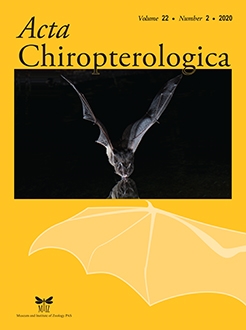Emerging pathogens can cause mass mortalities in susceptible species. High host mortality, in turn, can alter species composition, community structure and function. White-nose syndrome (WNS) is an emerging wildlife disease introduced to North America that has decimated millions of cave-dependent bats. For areas affected by WNS, there have been reports of community compositional changes, but compensatory changes to species composition following WNS has only been suggested, not reported. To determine if compensatory changes to species composition occur following WNS, we used seven years of data from statewide citizen science mobile bat acoustic routes initiated by the Ohio Division of Wildlife in 2011. We hypothesized that migratory bat abundance increased and cave-dependent bat abundance decreased following the emergence of WNS in the study period (2011–2017). Our hypothesis was based on the higher susceptibility of cave-dependent bats than migratory bats to infection and WNS mortality. We used two sets of models to identify abundance trends of each species found in Ohio and species grouped by wintering and roosting behaviors that are putatively important to changes in species composition post-WNS. Following WNS, we found a compensatory change in species in summer months from cave-dependent, cavity-roosting species (Myotis species and Eptesicus fuscus) to migratory, cavity-roosting species (Nycticeius humeralis and Lasionycteris noctivagans). However, for species that roost in foliage in the summer, we did not detect an increase in migratory species (Lasiurus borealis and Lasiurus cinereus) paired with a decrease in cave-dependent species (Perimyotis subflavus). The observed post-WNS trends in bat populations could suggest shifts in bat species composition in other areas where WNS is established.
How to translate text using browser tools
1 December 2020
Mobile Bat Acoustic Routes Indicate Cavity-Roosting Species Undergo Compensatory Changes in Community Composition Following White-Nose Syndrome
Molly C. Simonis,
Bridget K. G. Brown,
Volker Bahn
ACCESS THE FULL ARTICLE

Acta Chiropterologica
Vol. 22 • No. 2
December 2020
Vol. 22 • No. 2
December 2020
bat abundance
bat acoustics
bat species composition
mobile acoustic route
white-nose syndrome




